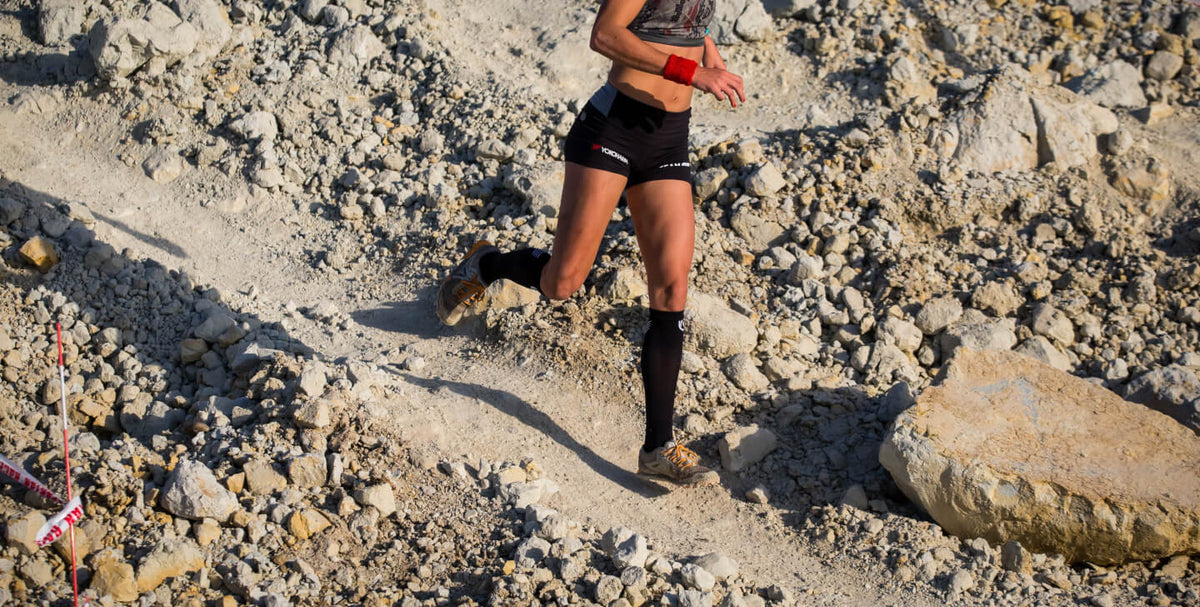Mountain Running 101

Mountain running: It's a great way to train and prepare for all Spartan races (and in particular the Mountain Series). But what about optimizing this preparation to make hill running and mountain running a special strength?
Strength and Weights or in the Gym
When it comes to training for mountain running aces, you have to go beyond the general gym exercises and into plyometrics, like box jumps and jumping lunges to build explosive power. Other helpful exercises include Bulgarian split squats to help with general muscle strength and stability, as well as moves that target specific muscles, like single-leg bench bridges, ball hamstring curls, and back extensions.
Merrill recommends adding these exercises to your gym routine one to two days a week. “It’s meant to be high intensity,” he says. “This isn’t your everyday gym routine; this is specialized high intensity work.” If you are doing these exercises without added weight, aim for 10 to 20 reps. If you are adding extra weight, that count will be closer to 5 to 10 reps. Either way, the goal is to fatigue by the end of the reps and exercise.
For more power and strength, add some exercises that have a lower rep count but heavier weight. For example, Merrill recommends back squats and front squats, as well as one-legged split squats with dumbbells, and farmer or loaded carries, which work your core and build up your carrying ability, perfect for obstacles like the Atlas Carry or the Bucket Brigade.
Focusing on these posterior-chain muscles will help build strength in all areas needed to bound uphill. “People often think of the posterior chain as mainly the glutes, but it also includes the calves, hamstrings, and even the back,” Merrill says. Think about what you will do for all parts of that chain, like building back muscles to support uphill running and training the other muscles together to work as efficiently as possible. All of these exercises will build muscle, power, and stamina for booking it up those hills. Next comes conditioning to work on your stride, strike, and overall form.
Conditioning or on the Track and Trail
To get your body ready for the mechanics of running uphill, Merrill recommends training on not just hills, but also on flat ground where you can go fast and open up your stride.
On a track or other flat ground, perform drills once a week specific to whichever race you are training for. For example, for the sprint race, practice 100-, 200-, and 400-meter sprints around the track. On your hill day, do similar hill repeats (sprinting up, walking down) to work up to 20 reps.
If you are training for the Spartan Super or Beast, lengthen those sprints to 400 or 800 meters both on the track and uphill. Last, add an unstructured hilly run once or twice per week. This will make your endurance soar, and will prepare you for some downhill work, which can often be more taxing on your body than running uphill. If you can’t incorporate downhill runs into your weekly routine, simulate running downhill in the gym by doing box jumps or squat jumps, with a strict focus on absorbing the landing rather than powering into the jump.
Mentally or at the Starting Line
On race day, make sure you provide your body with enough calories, hydration, and electrolytes to get you up those hills. Practicing fueling on some of your longer runs with whatever calories you’ll use during the race, so that you know what your body can handle and what it can’t.
Aim for just the next obstacle, the top of just the next hill, and have fun. Because ultimately, you can trust that your training will get you there, says Merrill. You’ve done the work, and that work will get you to the finish line.
4 weeks to fitness. Download the Get Fit Fast Program




